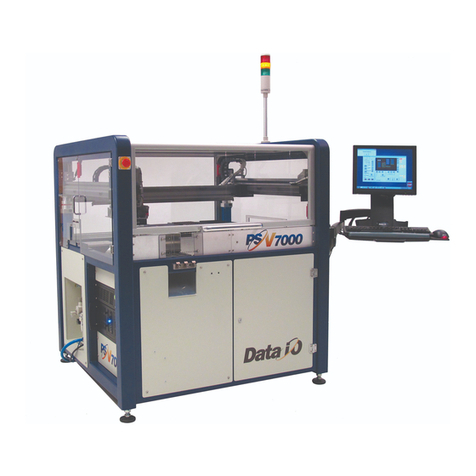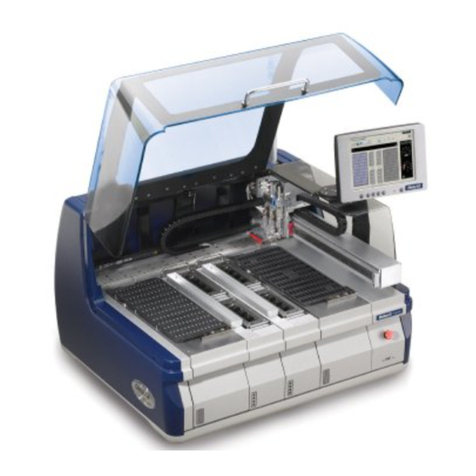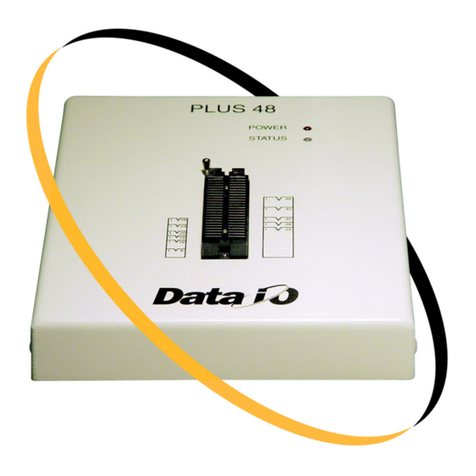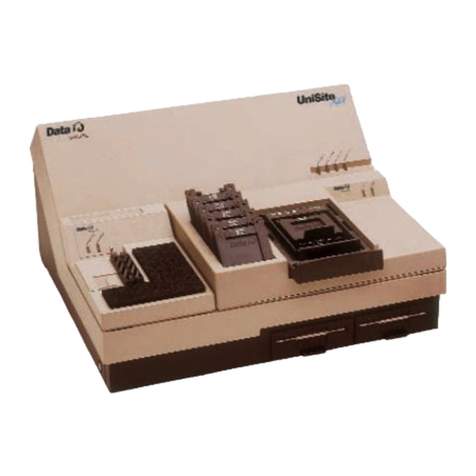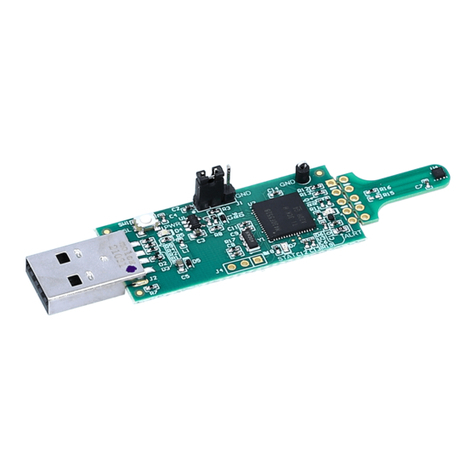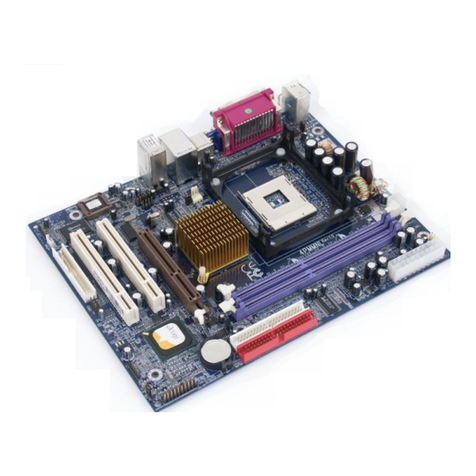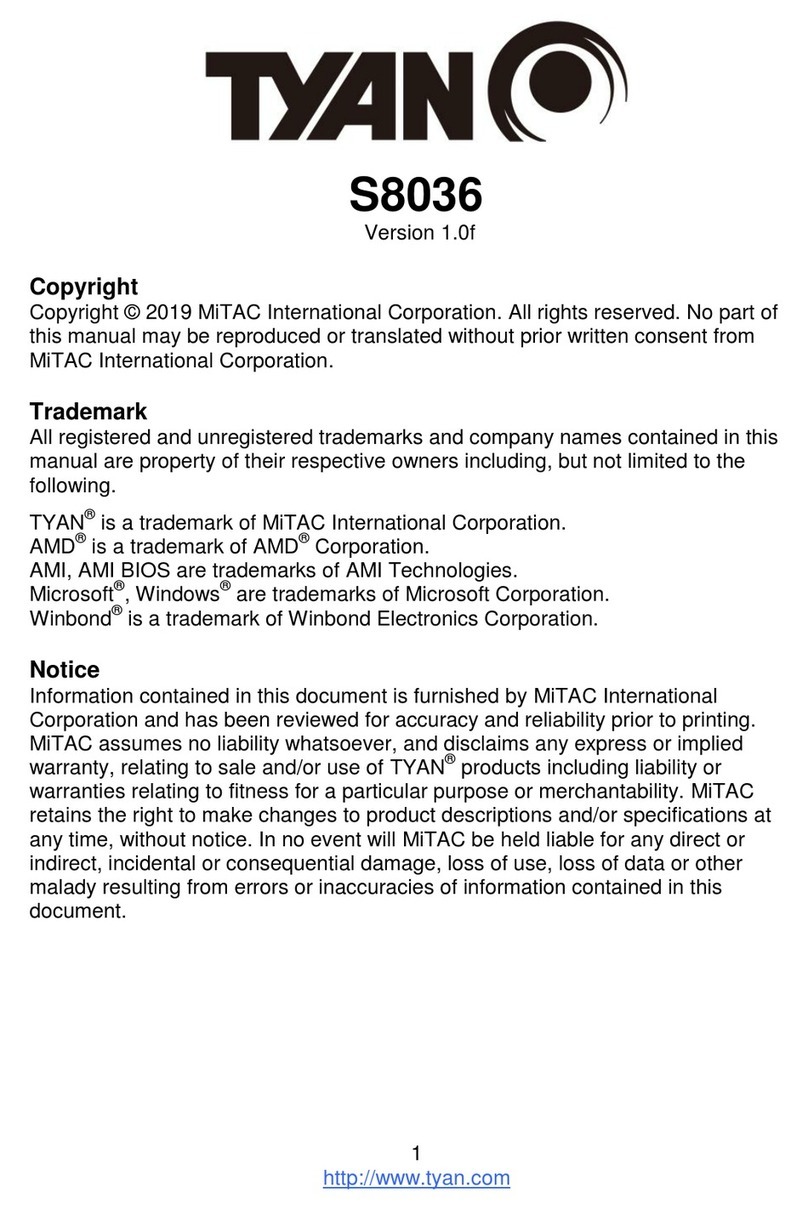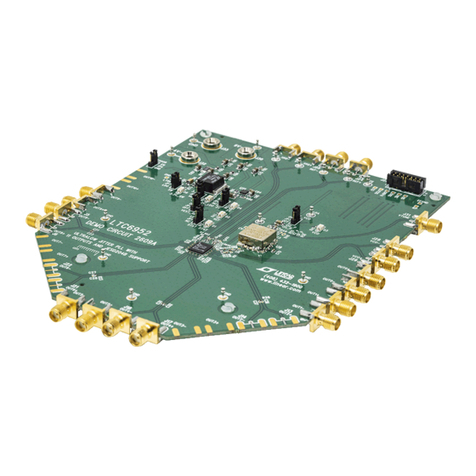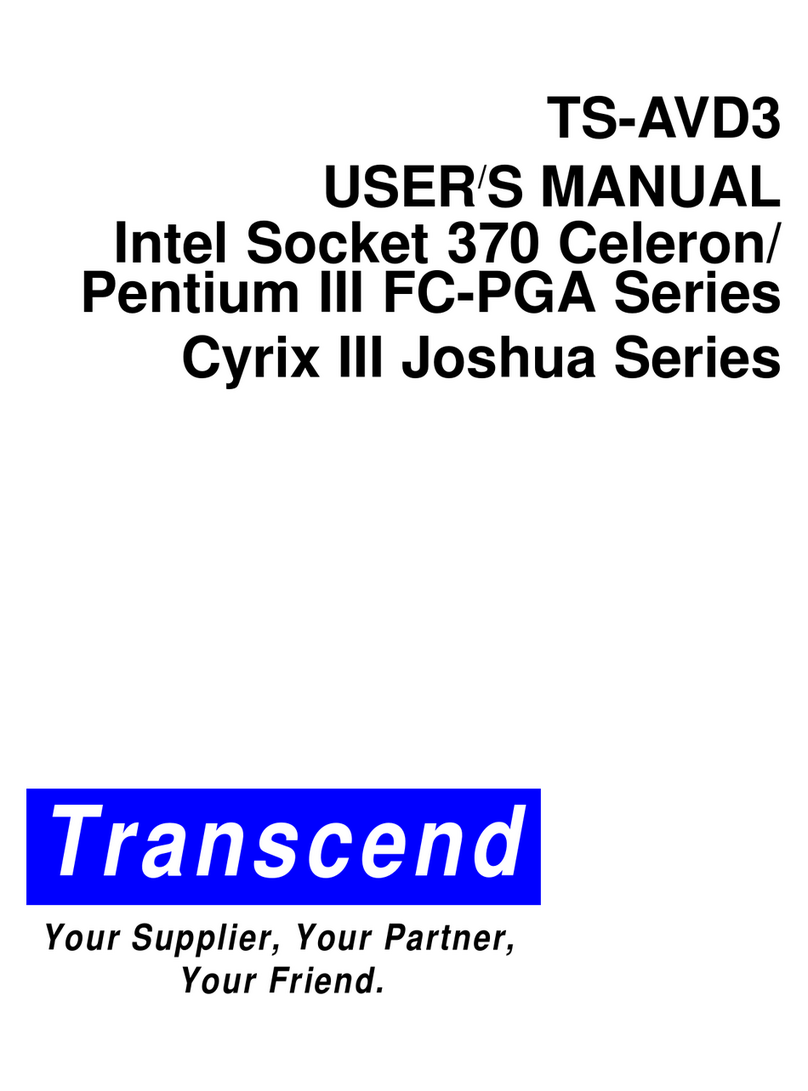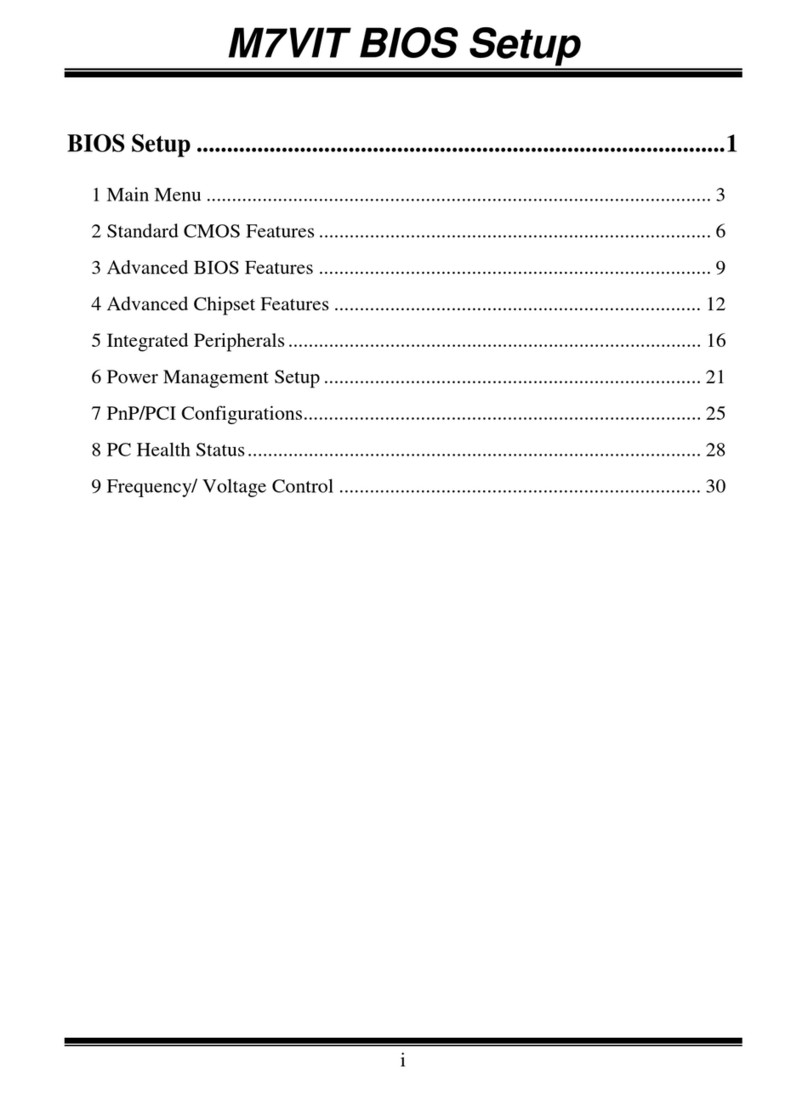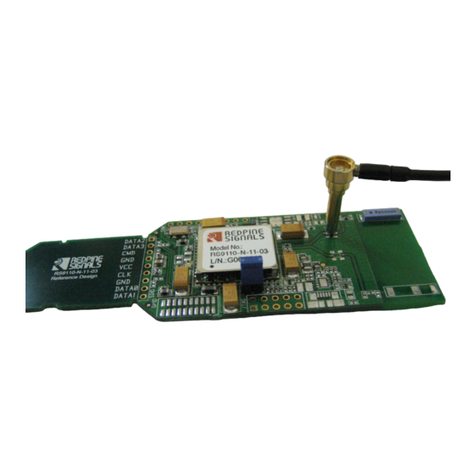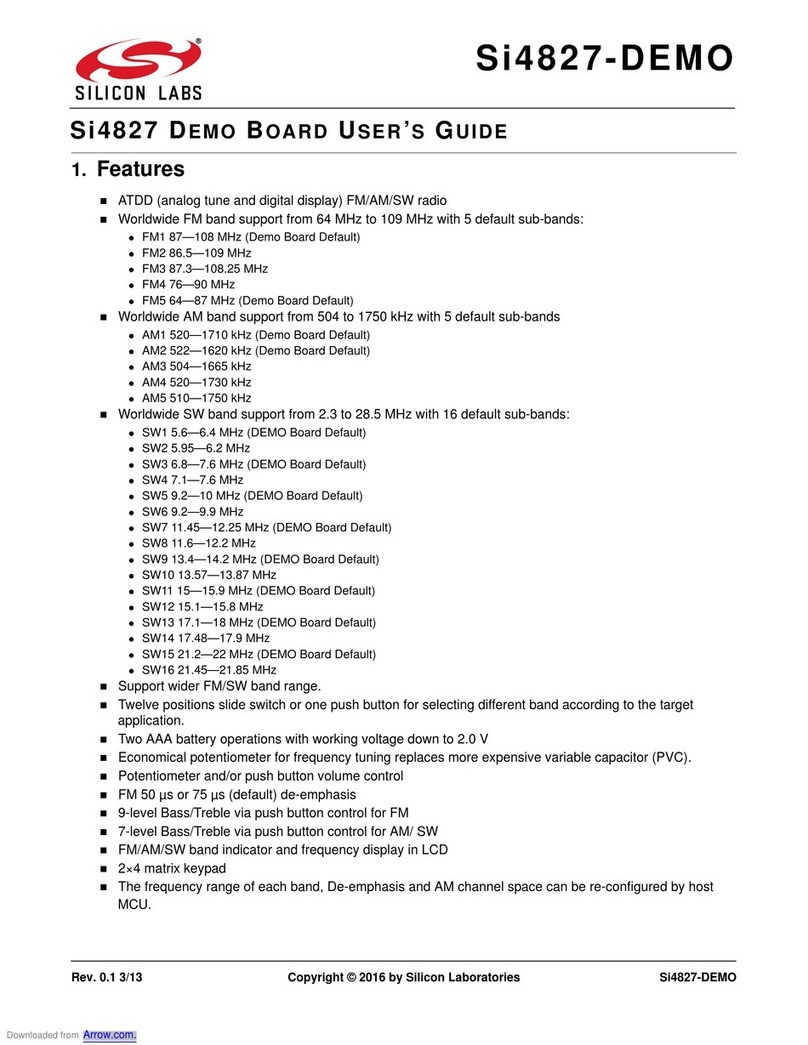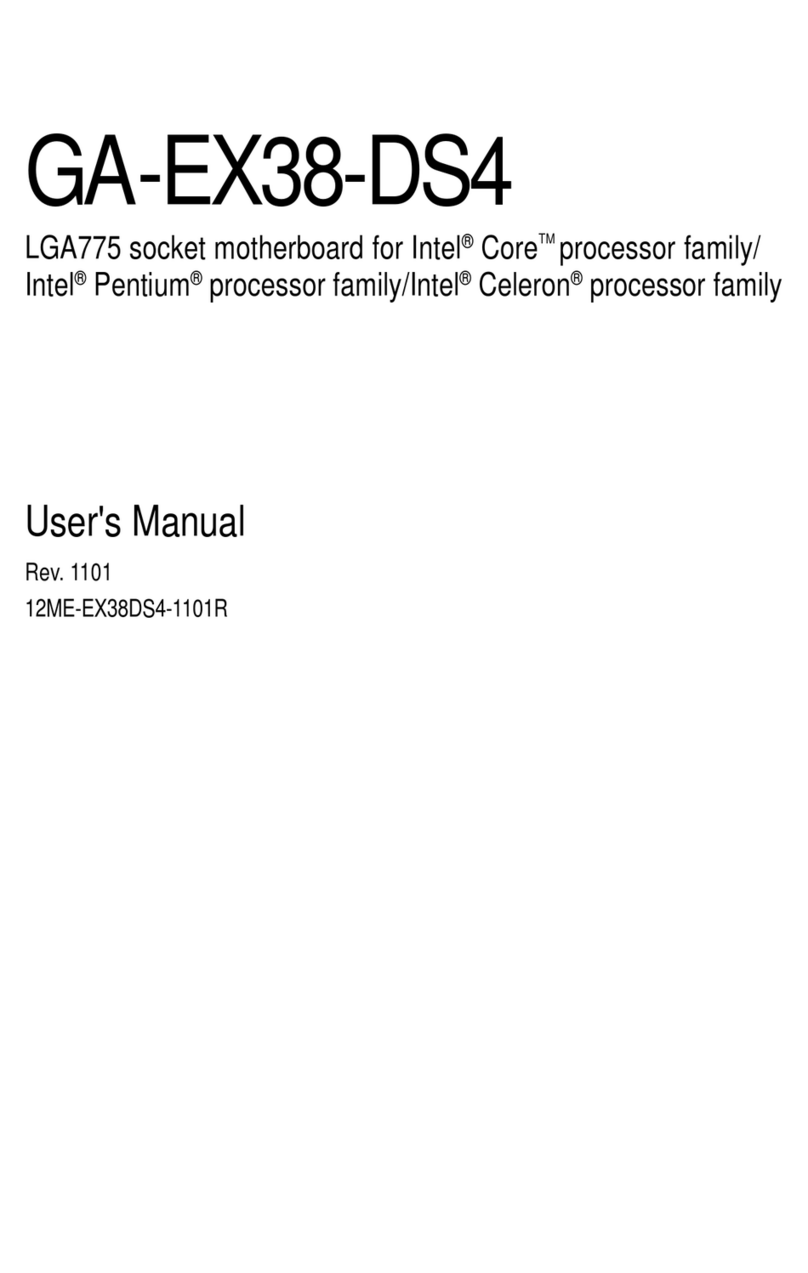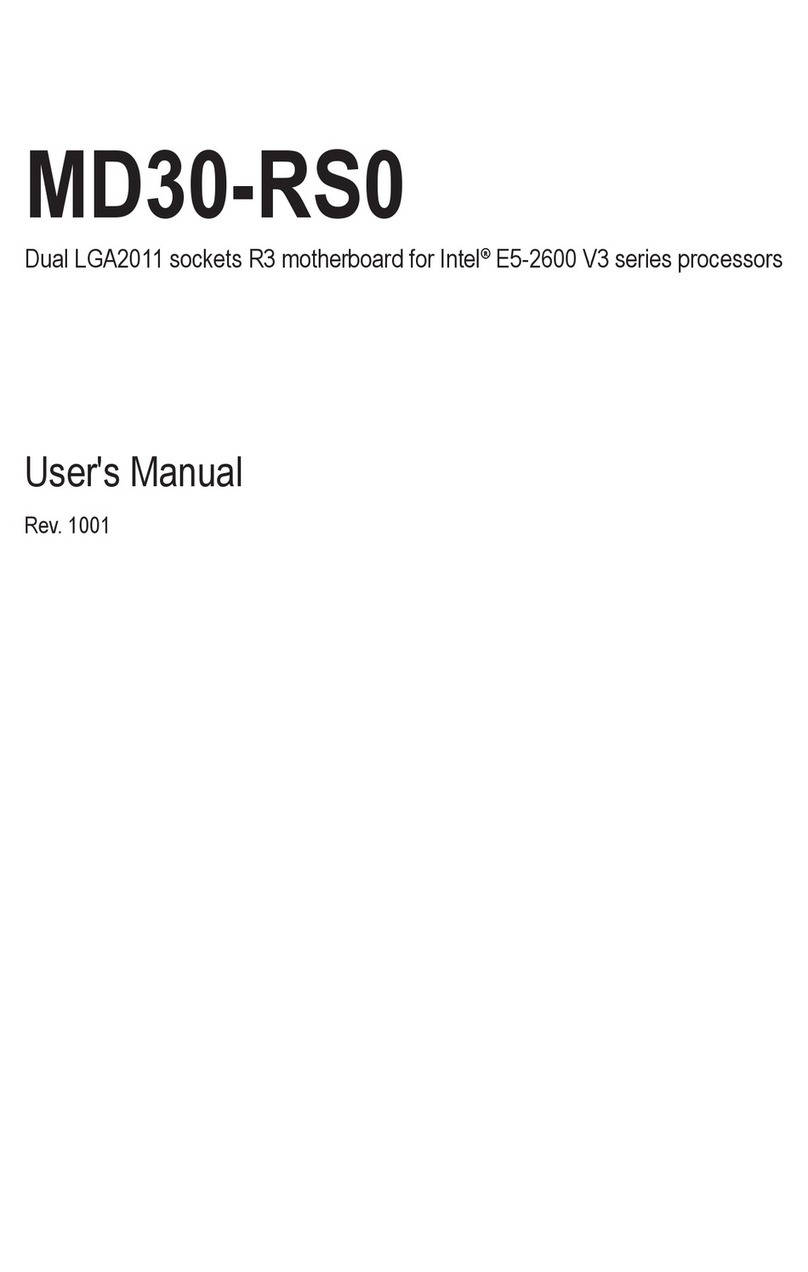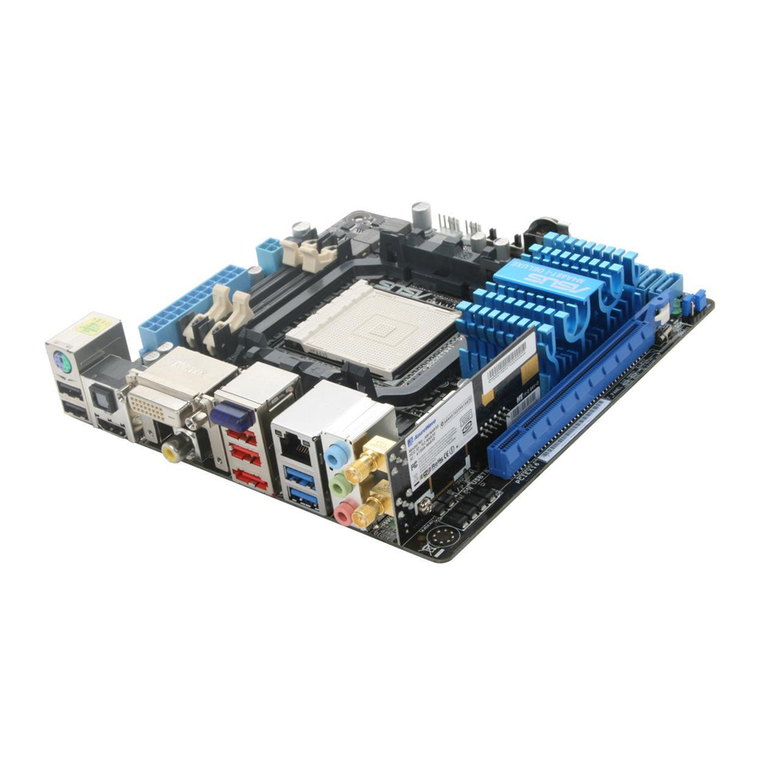Data I/O 298 User manual

298
UNIVERSAL
PROGRAMMER
981-0121-001
REV A OCTOBER
84
Copyright © Data
1/0
Corporation, 1984. All rights reserved.

Data 110 has made every
attempt
to ensure
that
the information in this
document
is accurate
and
complete. However,
Data II0 assumes no liability
for
errors,
or
for
any damages
that
result
from
use
of
this
document
or
the equipment which
it
accompanies.
Data 110 reserves the
right
to make changes to this document
without
notice
at
any time.
*LogicPak™ and Logic Fingerprint™
are
trademarks
of
Data
1/0
Corporation.
Applies to: Engineering part No. 990-0013-016
Text Part Number 090-0201-002
i
10-990-0013

SAFETY
SUMMARY
Genera!
safety information for operating personnel
is
contained in this summary. In addition, specific WARNINGS and
CAUTIONS appear throughout this manual where they apply and are
not
included in this summary.
Definitions
WARNING statements identify conditions or practices that could result in persona! injury or !oss
of
!ife.
CAUTION statements identify conditions or practices that could result in damage
to
equipment or other property.
Symbols
A This symbol appears
on
the equipment and
it
indicates that the user should consult the manual
for
further detail.
V
l\J:
This symbol stands for Vac. For example, 120V
"'1
120
Vac
Power
Source
Check the voltage selector indicator (located on the rear panel)
to
verify that the product
is
configured for the
appropriate line voltage.
Grounding
the
Product
The product
is
grounded through the grounding conductor
of
the power cord. To avoid electric shock, plug the power
cord into a properly wired and grounded receptacle only. Grounding this equipment
is
essential
for
its safe operation.
Power
Cord
Use
only the power cord specified for your equipment.
Servicing
To reduce the risk
of
electric shock, do not perform any servicing other than that described in this manual.
ii
10-990-0013

TABLE
OF
CONTENTS
SECTION 1. INTRODUCTION
1.1
iNTRODUCTiON
....................................................................
1-1
A
,..
,..,,1
....
...-.-.
a
"'Ir-I"'\\
/lf""'\AI
1_.,
1.L ;:,y;::, 1
c1v1
uvcnv1cvv
...........................•................•...................
,-,
1.3 INTRODUCTION TO OPERATION
.....................................................
1-4
1.3.i TYPiCAL 298 OPERATiON
......................................................
1-5
1.3.2 SAMPLE 298 PROGRAMMER OPERATION
WITH
UNIPAK™
.......................
1-5
1.3.3 REMOTE OPERATION
..........................................................
1-7
1.4 SPECIFICATIONS
...................................................................
1-8
1.4.1 FUNCTIONAL SPECIFICATIONS
................................................
1-8
1.4.2 POWER REQUIREMENTS
.......................................................
1-8
1.4.3 PHYSICAL
AND
ENVIRONMENTAL REQUIREMENTS
.............................
1-8
1.5 FIELD APPLICATIONS SUPPORT
.....................................................
1-8
1.6
WARRANTY
........................................................................
1-8
1.7 SERVICE
...........................................................................
1-9
1.8 ORDERING
...........................
·
..............................................
1-9
SECTION 2.
INSTALLATION
2.1
INTRODUCTION
...........................................................
_
.........
2-1
2.2 PAK INSTALLATION
................................................................
2-1
2.3 PAK REMOVAL
.....................................................................
2-2
2.4 POWER CONNECTION
..............................................................
2-2
2.4.1 VERIFYING/CHANGING THE OPERATING VOLTAGE
..............................
2-2
2.4.2 VERIFYING/REPLACING THE LINE FUSE
........................................
2-4
2.4.3 GROUNDING THE
UNIT
........................................................
2-4
2.4.4 APPLYiNG POWER
............................................................
2-5
2.5 SERIAL 1/0 INTERFACE
.............................................................
2-6
2.5.1 CABLING
.....................................................................
2-6
2.5.2 SETTING PARAMETERS
.......................................................
2-8
2.5.3 HOOKING UP A SERIAL PAPER TAPE READER
..................................
2-9
SECTION
3.
OPERATION
3.1
INTRODUCTION
....................................................................
3-1
3.2 POWER-UP
.........................................................................
3-2
3.2.1 GENERAL OPERATING NOTES
..................................................
3-2
3.2.2 POWER-UP PROCEDURE
.......................................................
3-2
3.3 POWER-DOWN
.....................................................................
3-3
3.4
MANUAL
KEYBOARD OPERATIONS
..................................................
3-3
3.4.1
FAMILY
AND
PINOUT CODES
..................................................
3-3
3.4.2 DEVICE INSERTION
............................................................
3-4
3.4.3 DEVICE REMOVAL
.............................................................
3-4
3.5 SOURCE/DESTINATION METHOD
OF
SYNTAX
(COPY
AND
VERIFY)
....................
3-5
3.5.1 SOURCE/DESTINATION DETERMINATION
.......................................
3-5
3.5.2 GENERALIZED KEY SEQUENCE
SYNTAX
........................................
3-6
3.6 FRONT PANEL KEYBOARD
DATA
TRANSFER OPERATIONS
...........................
3-7
3.6.1 LOAD RAM
WITH
MASTER DEVICE
DATA
......................................
3-7
3.6.2 LOAD RAM FROM SERIAL PORT
...............................................
3-8
3.6.3 PROGRAM DEVICE
WITH
RAM
DATA
...........................................
3-9
3.6.4 OUTPUT TO SERIAL PORT
....................................................
3-11
3.6.5 BLOCK MOVE
................................................................
3-12
3.6.6 VERIFY RAM
DATA
AGAINST
MASTER DEVICE
DATA
..........................
3-13
3.6.7 VERIFY RAM FROM SERIAL PORT
.............................................
3-15
iii
10-990-0013

3.7 KEYBOARD EDIT OPERATIONS
.....................................................
3-16
3.7.1 HEXADECIMAL BASE
.........................................................
3-16
3.7.2 OCTAL BASE
................................................................
3-17
3.7.3 BINARY BASE
...............................................................
3-18
3.8 SELECT
KEY
FUNCTIONS
..........................................................
3-19
3.8.1 ACCESSING SELECT FUNCTIONS
.............................................
3-19
3.8.2 EXTENDED SELECT FUNCTIONS
...............................................
3-19
3.8.3 DESCRIPTIONS AND
KEY
SEQUENCES
........................................
3-19
3.8.4 RAM
DATA
MANIPULATION COMMANDS
.....................................
3-20
3.8.5 UTILITY
AND
INQUIRY COMMANDS
...........................................
3-23
3.8.6 SERIAL 1/0 OPERATIONS
.....................................................
3-32
3.9 REMOTE OPERATION
..............................................................
3-36
3.9.1 COMPUTER REMOTE CONTROL (CRC)
.........................................
3-36
3.9.2 SYSTEM REMOTE CONTROL (SRC)
............................................
3-45
SECTION
4.
MAINTENANCE
4.1
OVERVIEW
.........................................................................
4-1
4.2 MAINTENANCE
.....................................................................
4-1
4.2.1
COVER
REMOVAL
.............................................................
4-1
4.2.2 REMOVING THE CONTROLLER BOARD PROTECTIVE SHIELD
.....................
4-1
4.2.3 INSTALLING
THE
PROTECTIVE SHIELD
.........................................
4-1
4.2.4 CLEANING
....................................................................
4-1
4.2.5 INSPECTION
..................................................................
4-1
4.3 CALIBRATION
......................................................................
4-2
4.3.1
POWER
SUPPLY CALIBRATION
................................................
4-2
4.3.2 PERFORMANCE CHECK/DC CALIBRATION SET-UP
..............................
4-4
4.3.3 CALIBRATION
OF
PROGRAMMING PAKS AND MODULES
........................
4-6
4.4 TROUBLESHOOTING
................................................................
4-7
4.4.1 PRELIMINARY TROUBLESHOOTING
............................................
4-7
4.4.2 TROUBLESHOOTING SPECIFIC AREAS
..........................................
4-8
SECTION
5.
CIRCUIT DESCRIPTION
5.1
INTRODUCTION
....................................................................
5-1
5.2 GENERAL CIRCUIT DESCRIPTION
....................................................
5-1
5.3 DETAILED CIRCUIT DESCRIPTION
...................................................
5-1
5.3.1
POWER
SUPPLIES
.............................................................
5-3
5.3.2 KEYBOARD/DISPLAY
..........................................................
5-5
5.3.3 CONTROLLER . . . . . . . . . . . . . . . . . . . . . . . . . . . . . . . . . . . . . . . . . . . . . . . . . . . . . . . . . . . . . . . . . 5-5
APPENDIX
A.
DATA
TRANSLATION
FORMATS
A.1
INTRODUCTION
...................................................................
A-1
A.2
DATA
VERIFICATION
..............................................................
A-1
A.3 CODES. . . . . . . . . . . . . . . . . . . . . . . . . . . . . . . . . . . . . . . . . . . . . . . . . . . . . . . . . . . . . . . . . . . . . . . . . . . . A-3
A.4 LEADER
AND
NULL OUTPUT
.......................................................
A-3
A.5 TRANSLATION FORMATS
..........................................................
A-3
A.5.1 BINARY TRANSFER,
CODE
10
.................................................
A-3
A.5.2
DEC
BINARY FORMAT,
CODE
11
..............................................
A-3
A.5.3 ASCII BINARY FORMAT, CODES
01,
02
AND
03
(QR
095, 06,
AND
07)
............
A-4
A.5.4
THE
5-LEVEL BNPF FORMAT, CODES
08
OR
09
.................................
A-4
A.5.5 SPECTRUM FORMAT,
CODES
12
OR
13
........................................
A-4
A.5.6 ASCII OCTAL AND
HEX
FORMATS, CODES
30-37
AND
50-58
....................
A-5
A.6 MICROPROCESSOR FORMATS
.....................................................
A-7
iv
1
0-990-0013

APPENDIX B.
TERMINAL
REMOTE CONTROL (TRC)
B.1
INTRODUCTION
....................................................................
B-1
B.2 SYSTEM VARIATIONS
.............................................................
B-1
B.3 COMMAND GROUPS
...............................................................
8-2
B.4
SYNTA_X
.......
------
.............................................................
B-7
B.5 PROGRAMMER RESPONSES TO TERMINAL
DATA
ENTRY
..
, . , , , ,
...
, , . ,
.............
B-7
B.6 SERIAL 1/0 INTERFACE
............................................................
B-7
B.7 ACCESS TO REMOTE CONTROL
....................................................
B-7
B.7.1 ENTRY
.......................................................................
B-7
B.7.2 EXIT
.........................................................................
B-7
B.8 COMMAND
SUMMARY
.............................................................
B-8
B.8.1 CONTROL-KEY COMMANDS
...................................................
B-8
B.8.2 UTILITY
COMMANDS
.........................................................
B-8
B.8.3 DEVICE COMMANDS
........................................................
B-10
B.8.4 1/0
COMMANDS
............................................................
B-11
B.8.5 EDITING
COMMANDS
........................................................
B-15
B.8.6 MEMORY MODE COMMANDS
................................................
B-16
APPENDIX
C.
OPTIONAL HANDLER INTERFACE
C.1
INTRODUCTION
................................•.•...............•....•.•••........
C-1
C.2 COMPATIBILITY
............................................
·
.......................
C-1
C.3 HANDLER PORT INFORMATION
.....................................................
C-1
C.4 SYSTEM COMPONENTS
............................................................
C-4
C.5 PERFORMANCE BOARD SELECTION
.................................................
C-4
C.6
MCT HANDLER SET-UP
............................................................
C-5
C.7 SYSTEM SET-UP
...................................................................
C-5
C.7.1 CONNECTING THE HANDLER UniPak™ TO THE PERFORMANCE BOARD
..........
C-5
C.7.2 INSTALLING THE PERFORMANCE BOARD
......................................
C-6
C.7.3 CONNECTING THE 29B TO THE HANDLER
......................................
C-6
C.7.4 CONNECTING A COMPUTER
OR
TERMINAL TO THE 29B
........................
C-7
C.8 POWER-UP
........................................................................
C-7
C.9 BASIC
DATA
TRANSFER OPERATIONS
..............................................
C-9
C.9.1 ENTERING
CRC
MODE (OPTIONAL)
............................................
C-9
C.9.2 ENTERING FAMILY
AND
PINOUT CODES
.......................................
C-9
C.9.3 DEVICE INSERTION
...........................................................
C-9
C.9.4 BINNING CONTROL
...........................................................
C-9
C.9.5 PREVENTING NONBLANK DEVICES FROM BEING PROGRAMMED
...............
C-10
C.9.6 LOAD
RAM
WITH
MASTER DEVICE
DATA
.....................................
C-10
C.9.7 PROGRAM A DEVICE
WITH
29B
RAM
DATA
...................................
C-10
C.9.8 VERIFY 29B'S RAM
DATA
WITH
MASTER DEVICE
DATA
.......................
C-11
C.19 OTHER
COMMANDS
.............................................................
C-11
APPENDIX D. REFERENCE
MATERIAL
APPENDIX
E.
ERROR CODES
APPENDIX
F.
SCHEMATICS
v
10-990-0013

LIST
OF
FIGURES
1-1
29B
System Components
............................................................
1-3
1-2
29B
Front
Panel
Functions
...........................................................
1-4
1-3
Sample
29B
Programmer Operation . . . . . . . . . . . . . . . . . . . . . . . . . . . . . . . . . . . . . . . . . . . . . . . . . . .
1-6
1-4
Sample Sum-Check Calculation
......................................................
1-7
2-1
Installing/Removing a Programming
Pak
..............................................
2-2
2-2 Back
Panel
........................................................................
2-2
2-3 Voltage Wheel Selector
.............................................................
2-3
2-4 Accessing the Line
Fuse
. . . . . . . . . . . . . . . . . . . . . . . . . . . . . . . . . . . . . . . . . . . . . . . . . . . . . . . . . . . . 2-4
2-5 Programmer Power Switch Location
..................................................
2-5
2-6 Sample Interconnection Methods
.....................................................
2-6
2-7
Baud
Rate
Switch and
RS232
Serial Port
..............................................
2-8
2-8 Status Switch Setting. . . . . . . . . . . . . . . . . . . . . . . . . . . . . . . . . . . . . . . . . . . . . . . . . . . . . . . . . . . . . . . 2-8
2-9 Interconnection Method
of
Serial Paper Tape Reader
...................................
2-9
3-1
Power Switch and Power Cord Locations
.............................................
3-2
3-2 Device Installation (Multiuse Sockets)
.................................................
3-4
3-3 Block Move
.......................................................................
3-12
3-4 Computer Remote Control Components
..............................................
3-37
3-5 Inputting Remote Control Parameters
................................................
3-46
4-1
Calibration . . . . . . . . . . . . . . . . . . . .. . . .. . . . . . . . . . . . . . . . . . . . . . . . . . . . . . . . . .. . . . . . . . . . . . . . . 4-2
4-2 Power Supply Test and Adjustment Points
............................................
4-3
4-3
Front
Panel
and Protective Shield Removal
............................................
4-4
4-4
29B
with Programming Module Prepared for Calibration
.................................
4-5
4-5 Troubleshooting
....................................................................
4-7
4-6 Checking Baud
Rate
on
Pin
2
........................................................
4-9
5-1
Functional Diagram
of
29B
Universal Programmer
......................................
5-1
5-2 Interconnect Diagram for 29B Universal Programmer
....................................
5-2
5-3
Circuit Board Locations
.............................................................
5-3
5-4
Power Supply Circuitry
..............................................................
5-4
5-5
Block Diagram
FIP
Display, Driver, and Keyboard
......................................
5-6
5-6
Controller Board Block Diagram
......................................................
5-7
5-7
Write Timing. . . . . . . . . . . . . . . . . . . . . . . . . . . . . . . . . . . . . . . . . . . . . . . . . . . . . . . .. . . . . . . . . . . . . . .
5-8
5-8
Read
Timing . . . . . . . . . . . . . . . . . . . . . . . . . . . . . . . . . . . . . . . . . . . . . . . . . . . . . . . . . . . . . . . . . . . . . . .
5-8
5-9
Expansion RAM Board Block Diagram . . . . . . . . . . . . . . . . . . . . . . . . . . . . . . . . . . . . . . . . . . . . . . . .
5-9
5-10
Optional Handler Interface Block Diagram
............................................
5-10
A-1
Formatting the Instrument Control Code and Data Translation Format Code
..............
A-2
A-2 Input or Output Binary Tape
........................................................
A-3
A-3 ASCII Binary Formats . . . . . . . . . . . . . . . . . . . . . . .. . . . . . . . . . . . . . . . . . . . . . . . . . . . . . . . . . . . . . . A-4
A-4 Spectrum Format . . . . . . . . . . . . . . . . . . . . . . . . .. . . . . . . . . . . . . . . . . . . . . . . . . . . . . . . . . . . . . . . . . A-4
A-5 ASCII-Octal and Hex Formats
.......................................................
A-5
A-6 Optional Address Field
in
ASCII-Cota! and Hex Formats . . . . . . . . . . . . . . . . . . . . . . . . . . . . . . . . A-6
A-7 Syntax
of
the Sum-Check Field
in
1/0 Operation
......................................
A-6
A-8 Specifications for RCA Cosmac Data
Files
............................................
A-7
A-9 Specifications for Fairchild Fairbug Data
Files
. . . . . . . . . . . . . . . . . . . . . .. . . . . .. . . . . . . . . . . . . A-8
A-10 Specifications
for
MOS Technology Data
Files
........................................
A-9
A-11
Specifications for Motorola Data
Files
...............................................
A-10
A-12 Specifications for Intel lntellec
8/MDS
Data
Files
.....................................
A-11
A-13 Specifications for Signetics Absolute Object Data
Files
. . . . . . . . . . . . . . . . . . . .. . . . . . . . . . . . A-12
A-14 Specifications for Tektronix Hexadecimal Data Files
...................................
A-13
A-15 Specifications for Motorola Exormax Data
Files
......................................
A-14
A-16 Specifications for Intel MCS-86 Hexadecimal Object (Code
88)
Data Files
...............
A-15
A-17 Calculating
an
Address using the Intel MCS-86 (Code
88)
Extended Address Board
.......
A-17
A-18 Specifications for Hewlett Packard Absolute Format Data
Files
.........................
A-18
A-19 Specifications for Texas Instruments SDSMAC Data
Files
.............................
A-19
B-1
System Configuration Between Programmer and Terminal Remote Control
...............
B-1
C-1
29B
Handler Port
Pin
Assignment. . . . . . . . . . . . . . . . . . . . . . . . . .. . . . . . . . . . . . . . . . . . . . . . . . . .
C-1
C-2
Handler Control Signal Timing Diagram . . . . . . . . . . . . . . . . . . . . . . . . . . . . . . . . . . . . . . . . . . . . . .
C-3
C-3
The 29B/Handler System
...........................................................
C-4
C-4
Connecting the Handler UniPak™ and Performance Board
..............................
C-5
vi
10-990-0013

C-5 !nsta!!ing the Performance Board-MCT Handler
........................................
C-6
C-6 Installing the Performance Board-Delta Handler
........................................
C-7
C-7 Handler/Programmer Connection-MCT Handler
........................................
C-8
C-8 Handler/Programmer Connection-Delta Handler
.......................................
C-8
LIST
OF
TABLES
1-1
Using the 29B Manual
..............................................................
1-1
1-2 Available Translation Formats
for
the 29B Universal Programmer
.........................
1-8
2-1
Line
Fuse
Ratings . . . . . . . . . . . . . . . . . . . . . . . . . . . . . . . . . . . . . . . . . . . . . . . . . . . . . . . . . . . . . . . . . . 2-4
2-2 Serial Interface Connector
Pin
Assignments
...........................................
2-7
3-1
Copy and Verify Operations
.........................................................
3-5
3-2 Address Parameters
..................
: . . . . . . . . . . . . . . . . . . . . . . . . . . . . . . . . . . . . . . . . . . . . . 3-6
3-3 Select Commands
.................................................................
3-19
3-4 Response Characters. . . . . . . . . . . . . . . . . . . . . . . . . . . . . . . . . . . . . . . . . . . . . . . . . . . . . . . . . . . . . . .
3-37.
3-5 Error Status Word
.................................................................
3-38
3-6 Command Summary
...............................................................
3-40
3-7 Control Commands
................................................................
3-41
3-8 Utiiity Commands . . . . . . . . . . . . . . . . . . . . . . . . . . . . . . . . . . . . . . . . . . . . . . . . . . . . . . . . . . . . . . . . . 3-41
3-9 Device Commands. . . . . . . . . . . . . . . . . . . . . . . . . . . . . . . . . . . . . . . . . . . . . . . . . . . . . . . . . . . . . . . . . 3-42
3-10 1/0 Commands
...................................................................
3-43
3-11
Editing Commands . . . . . . . . . . . . . . . . . . . . . . . . . . . . . . . . . . . . . . . . . . . . . . . . . . . . . . . . . . . . . . . . 3-44
3-12 Handler Commands
................................................................
3-44
3-13 Command Entry in SRC
............................................................
3-45
3-14 Select Commands
.................................................................
3-57
4-1
Calibration Voltage Ranges
..........................................................
4-2
4-2 Displays and Instructions
for
Calibrating Standard Programming Modules
.................
4-6
4-3 Power Supply Voltages
.............................................................
4-8
5-1
Address Map . . . . . . . . . . . . . . . . . . . . . . . . . . . . . . . . . . . . . . . . . . . . . . . . . . . . . . . . . . . . . . . . . . . . . . 5-5
A-1
Instrument Control Codes
..........................................................
A-2
A-2 Data Translation Formats
...........................................................
A-2
B-1
Control-Key Commands . . . . . . . . . . . . . . . . . . . . . . . . . . . . . . . . . . . . . . . . . . . . . . . . . . . . . . . . . . . . B-2
B-3 Device Commands . . . . . . . . . . . . . . . . . . . . . . . . . . . . . . . . . . . . . . . . . . . . . . . . . . . . . . . . . . . . . . . . . B-3
B-4 II0 Commands . . . . . . . . . . . . . . . . . . . . . . . . . . . . . . . . . . . . . . . . . . . . . . . . . . . . . . . . . . . . . . . . . . . . B-4
B-5 Editing Commands . . . . . . . . . . . . . . . . . . . . . . . . . . . . . . . . . . . . . . . . . . . . . . . . . . . . . . . . . . . . . . . . . B-5
B-6 Memory Mode Commands . . . . . . . . . . . . . . . . . . . . . . . . . . . . . . . . . . . . . . . . . . . . . . . . . . . . . . . . . . B-6
C-1
Handler Interface Connector Pin Assignment . . . . . . . . . . . . . . . . . . . . . . . . . . . . . . . . . . . . . . . . . . C-2
C-2 Handler-Specific Commands (
CRC
Mode) . . . . . . . . . . . . . . . . . . . . . . . . . . . . . . . . . . . . . . . . . . . . . C-9
vii
10-990-0013

SECTiOi\i 1
INTRODUCTION
1.1
INTRODUCTION
Data
I/O's
29B Universal Programmer utiiizes moduiar
programming paks
to
reliably
pmgiam
most commercia!!y
available programmable memory and logic devices. The
family code and pinout code tabie at the back
of
the
Pak
manual lists the devices {by manufacturer),
Standard features
of
the 29B include a 64K x 8 data RAM,
an
RS232C serial port and a 16-character alphanumeric
display. The 29B also offers
27
data translation formats
which enable you
to
communicate between the 29B and
development systems, such
as
Texas Instruments,
Motorola, Intel, Tektronix, Signetics, Fairchild, RCA and
Hewlett-Packard. In addition, the standard system includes
two
remote control protocols. The Data 1/0 Computer
Remote Control (CRC) communication protocol provides
CRC
operation
that
is compatible
with
other Data 1/0
products. System Remote Control (SRC) utilizes a simple
command protocol
that
is similar
to
the syntax featured in
the
29B
front
panel control
to
initiate rapid start-up in
remote operation. Both
of
these remote-control features
are
futty
documented
fn section 3 (Operation).
The 29B also offers the following optional features.
If
you
wish
to
purchase any
of
these features, contact your
nearest Data 1/0 sales representative; a list
of
sales
representatives is provided at the back
of
this manual.
• Terminal Remote Control
(TRCi-an
optional package,
compatible
with
Data
I/O's
System 1903.
• Handler
Interface-an
optional feature
that
allows you
to
connect the 298
to
a Delta or MCT device handler.
The combination
of
a 29B, Handler UniPak™, and
device handler enables you
to
program large quantities
of
both MOS (metal oxide semiconductor) and bipolar
PROMs (programmable read only memories)
with
minimum operator handling.
NOTE
Although other programming Paks can
be used, neither the PakIhandler
interface
nor
the
298
Handler
port
cable
is provided.
The
Handler
port
is required.
When using the Exatron 2500 handler, the optional handler
interface is
not
necessary and other programming paks
(other than the Handler UniPak™l can be used. Exatron
provides the interface necessary for operation with the 298.
• Serial Paper Tape Reader (950-1950)-can be used
to
transmit data from a paper tape
to
your 298.
This manuai describes the components and operation
of
the 298. Subjects addressed in this manual and the
corresponding sections are listed in table 1-1. Use this list
as
a quick-reference point
of
the major sections in this
manual.
Table 1-1. Using the 298 Manual
SUBJECT SECTION
Safety Summary Front
of
manual
Pak Installation 2.2
Power Connection 2.4
Serial 1/0 Interface 2.5
Power-Up 3.2
Power-Down 3.3
Manual Keyboard Operations 3.4
Selecting the Family and Pinout
Codes See Pak Manual.
Device Insertion 3.4.2
Source/Destination Method
of
Syntax
.,
"
""·""'
Front Panel Keyboard Data
Transfer Operations 3.6
Edit Data 3.7
Perform a Select Function 3.8
Remote Operations 3.9
I Maintenance
of
29B 4.2
Maintenance
of
Pak See Pak manual.
Calibration
of
29B Power Supplies 4.3.1
Calibration
of
29B and Pak See Pak Manual.
Troubleshooting 29B 4.4
Troubleshooting Pak See Pak Manual.
Circuit Description Section 5
Data Translation Formats Appendix A
Terminal Remote Control Appendix B
Optional Handler Interface Appendix C
Reference Material Appendix D
Error Codes Appendix E
Schematics Appendix F
Data II0 Service Centers Back
of
Manual
Warranty Information Back
of
Manual
1-1
10-990-0013

Throughout this manual, the entries that you
are
to make
from either the programmer or a terminal are indicated by
an
equipment symbol and key symbol. For example,
E?:=1
8
298
indicates the
"COPY"
key on the programmer keyboard
should
be
pressed.
In
addition, the symbols shown below
are
used
to
indicate terminal operation, prompts that will
appear on the CRT, or prompts that will appear on the
programmer display.
TERMINAL
(LLI
LI
I
_II_
I_
I_
I_
I 0
CRT
1-11
11C
L
l_I
lJL:
I\
298 DISPLAY J
1.2 SYSTEM OVERVIEW
The 298 provides a universal means
of
programming,
testing, and verifying a variety
of
memory and logic
devices. You can tailor the 298
to
your programming needs
by selecting the appropriate programming
Pak
and plugging
it into the 298. The various programming components from
which you can choose to complete your programming
system
are
listed below and shown in figure 1-1.
• Uni
Pak
2™-
programs more than
600
devices, including
MOS and CMOS EPROMs and EEPROMs, fuse link,
AIM and DEAP bipolar PROMs. Programming
algorithms
are
software selectable and no additional
personality modules are required. Simple pinout adapters
are available
for
40-pin microcomputers and parts with
non-standard pinouts.
•
LogicPak™-combined
with appropriate plug-in
adapters, allows you
to
design, program and
functionally test more than 80 different logic devices.
The high-level software translates your logic design from
truth tables or Boolean equations into the correct fuse
map.
•
GangPak™-gives
you the capability
of
programming, in
a single operation, identical sets
of
MOS
EPROMs
or
EEPROMs. Set programming allows you to partition a
program into one or more sets
of
PROMs. The
GangPak™ can also
be
used
for
conventional gang
programming
of
up to eight devices at a time.
•
MOSPak™-programs
more than
145
MOS EPROMs
and EEPROMs, requiring no additional hardware.
1-2
10-990-0013

298
PROGRAMMER
Base
unit with keyboard; accepts
Paks;
contains
control electronics. 298 also contains standard
System Remote Controi
(SRC)
and Computer
Remote Control (CRCI software. An optional handler
interface can
be
used for fast, high-volume
progiamming
of
rv~OS
and
bi=potar
PROMs.
PROGRAMMING PAKS
The standard Computer Remote Control (CRCI allows
you
to
save programs on disk
or
tape which may be
downloaded
to
the 298. System Remote Control
{SRC) allows you
to
send commands
to
the 298
from a terminal, and
an
optional Terminal Remote
Control
ffRC~
is a terminal remote mode which is
compatible with that used in System
19
programmers.
*Terminal
not
included.
UniPak
2™
GangPak™
LogicPak™
Combined with appropriate plug-
in adapters, the LogicPak™
allows you
to
design, program
and functionally test more than
80
logic devices.
Programs more than
600
popular
bipolar PROMs, MOS EPROMs,
and MOS EEPROMs.
Programs multiple MOS PROM
sets and gang programs MOS
PROMs
for
high-volume
programming operations.
MOSPak™
Programs more than
145
MOS
EPROMs and
EEPROMs
with no
additional hardware changes.
PROGRAMMING
MODULES
Support device family
applications
not
covered by
programming
Paks.
Figure 1-1. 298 System Components
1-3
10-990-0013

1.3 INTRODUCTION TO OPERATION
With
the 298, you can perform four basic operations (listed
below) by using the four dedicated mode (operation) keys
on the front panel keyboard. These mode keys and their
uses
are
discussed
in
the following subsections
and
shown
in figure
1-2.
Section 3 (Operation) provides specific step-
by-step instructions on
how
to
execute the operations
listed
in
the following subsections.
Displays the current status
of
the programmer.
SOURCE/DESTINATION KEYS:
These keys can be used
to
specify
either the data's source or destination.
They work in conjunction with the
COPY and VERIFY keys. Refer
to
the
source/destination concept
of
data
transfer and verification
as
explained
in section 3.6.
~----
REVIEW KEY:
Gives the programmer backwards
"stepping"
capability through Select
Functions, edit addresses and
calibration steps. Also provides a
delete function when entering
parameters.
START KEY:
HEX KEYBOARD: MODE KEYS:
Commands the programmer
to
execute the operations selected
and sends entered hex values
in
edit mode,
to
memory. Also
gives the programmer forward
"stepping"
capability through
select function, edit addresses,
format menu and calibration
step.
Allows entry
of
hexadecimal
values.
COPY
Used
to
move a block
of
data
to
or from a serial port, RAM,
or
device. Works in conjunction
with
source/destination keys.
VERIFY
Used
to
make a byte-by-byte
comparison
of
a block
of
data.
Used with source/destination
keys.
SELECT
Prepares the programmer
to
accept codes for Select
Functions.
See
section 3.5.
EDIT
Allows viewing and changing
of
data
at
individually selected
RAM address locations.
See
section 3.4.10.
Figure 1-2. 298 Front Panel Functions
1-4
10-990-0013

1.3.1TYPICAL298
OPERATION
COPY (Data Transfers)
To tiansfer data
fiom
one device
to
another or from one
RAM location to another, use the
COPY
key. When you
press the
COPY
key, the programmer moves data from the
source {a device, the programmer RAM, or the serial port)
to
the destination
(a
device, the programmer RAM, or the
serial port); for example, from the programmer data RAM
to
a blank device
in
the socket.
At
the completion
of
this
operation, the device
is
programmed; that is,
it
contains a
copy
of
the data
in
the programmer RAM. The
"source/destination" concept
is
explained in section 3.5.
There
are
five basic types
of
copy operations. These
operations are summarized below and described in detail in
section 3.
• Load RAM with Master Device
Data-
transfers
programming data from a master device and
to
the
programmer RAM. When the data transfer
is
complete,
the 298 calculates and displays the sum-check
(see
Glossary for definition)
of
the loaded data.
• Load RAM from Serial
Port-translates
data received at
the serial port and transfers
it
to the programmer RAM.
When completed, the programmer calculates and
displays the sum-check
of
the data.
If
a sum-check has
been sent with the data from the serial port, the
programmer will compare the
two
and signal an error
if
they do
not
match.
•
Program-puts
the data in the programmer RAM into a
device. Programming is automatic, starting with an
illegal-bit test and a blank check to ensure that the
device can
be
programmed. Data
is
then programmed
into the device in the socket one byte at a time. This
continues until all data bytes have been programmed
into the device.
After
programming
is
completed, the
data
in
the device
is
automatically compared
with
the
RAM data to ensure correct programming.
• Output RAM to Serial
Port-translates
data from the
programmer RAM and transfers
it
to the serial port.
• Block move-rearranges blocks
of
data within RAM.
VERIFY (Data
Verification)
The VERIFY key
is
used to make a byte-by-byte
comparison
of
data in
two
locations, one referred to
as
the
"source"
and one
as
the "destination";
see
section 3-5
for
details. There
are
two
types
of
Verify operations.
• Verify
Device-compares
data twice from the device
(the destination) byte-by-byte with the data
in
RAM (the
source).
On
the first
pass
(first comparison), the 298
checks the parameters by lowering Vcc within the
manufacturer's specified lower level.
On
the second
pass,
Vee
is
iaised to the upper level specification
range.
• Verify RAM from Serial
Port-
compares incoming data
from the serial port byte-by-byte with the data
in
RAM.
EDIT
(Editing
Data)
The EDIT key allows you to view and change data at
specified RAM addresses. Section 3 provides specific
details.
SELECT
!Select
Functions)
The
SELECT
key allows you
to
change certain operationai
parameter default values, perform RAM data manipulations,
and access certain
less
frequently used operations. These
operations are referred
to
in this manual
as
Select
Functions. Detailed Select Function information, including
operation,
is
located in section 3.8.
1.3.2
SAMPLE
298
PROGRAMMER
OPERATION
WITH
UNIPAK™
The 298
is
a versatile tool
for
programming data into blank
devices. Figure 1-3 illustrates the process
of
programming
data from RAM into a blank device by using the
programmer's
front
panel keyboard.
In
this example, the
source
of
data
is
a master device; however, data can also
be
input from the programmer keyboard or through the
serial port.
When using a master device
as
your source
of
data, you
need only a few steps
to
program this data into a blank
device.
With
the appropriate pak installed (section 2.2) and
the machine powered on (section 2.4), the steps you need
to
perform this operation
are
provided beiow and
diagrammed
in
figure 1-3.
WARNING
Refer
to
the
safety
instructions
of
section
2.4
before
powering
up
the
298.
1.
Press:
COPY
+ DEVICE + RAM + START.
2. Enter the family and pinout codes for your device.
These codes are included in your
Pak
manual.
3. Insert the master device into the appropriate
Pak
socket.
4.
Press
START.
5. Remove master device from the socket.
6.
Press:
COPY + RAM +
DEVICE
+ START. If the
device to
be
programmed
has
different family and
pinout codes from the master, enter the correct codes.
Otherwise, go to the next step.
7. Insert the blank device into the appropriate
Pak
socket.
8.
Press
START.
Step 8 will initiate
an
illegal-bit and blank check test
(see
Glossary)
of
the device followed by the programming and
verify sequence. The programmer will signal you when the
device has been programmed.
1-5
10-990-0013

INSTALL
UNIPAK
2
!SECTION
21
TURN
ON
PROGRAMMER
I
SECTION
3
21
PRESS
COPY
DEVICE
RAM
START
I
SECTION
3
41
ENTER
FAMILY
ANO
PINOUT
CODES
!SECTION
3.4
11
INSERT
MASTER
DEVICE
IN
SOCKET
!SECTION
3.4
21
PRESS
START
REMOVE
MASTER
DEVICE
!SECTION
3.4.31
PRESS
COPY
RAM
DEVICE
START
!SECTION
3
41
INSERT
BLANK
DEVICE
TO
BE
PROGRAMMED
!SECTION
3 4
21
PRESS
START
ITHIS
Will
START
PROGRAM
OPERATION
I
REMOVE
PROGRAMMED
DEVICE
!SECTION
3 4
31
Figure
1-3.
Sample 298 Programmer Operation
1-6
10-990-0013
NO
ENTER
FAMILY
AND
PINOUT
CODE
!SECTION
3.4.11

After
data have
been
loaded into RAM from the serial port
or the master device, the programmer calculates the sum-
check
of
the data (figure
1-4)
and displays
it
(when in
terminal mode,
it
will
be
displayed on the terminal). The
sum-check, which
is
used
to
verify the integrity
of
data
transfers,
is
a summation
of
8-bit bytes
of
fuse data
expressed
as
a 4-digit hexadecimal number
(see
figure 1-4).
84
10000100
C1
11000001
62
01100010
24
00100100
l01csl
I
0000
0001
1100
10111
HEX
DATA
BINARY
DATA
Sum-check
in
Sixteen-bit binary
hexadecimal
notation sum-check
Figure 1-4.
Sample
Sum-Check
Ca1cutation
If data were loaded through the serial port and a sum-
check was sent with it, the programmer will compare the
sum-check with its own calculation. If they agree, the
correct sum-check
is
displayed,
If
they do
not
agree, the
programmer will signal
an
error. Data from the seriai port
will also
be
checked for correct parity
if
the program parity
switch
is
on
(see
subsection 2.5.2).
The System
19,
100A, 29A, and 298 programmers have a
data-lock feature that allows you
to
limit the accessibility
of
your RAM data. This
is
useful
in
production environments
to protect the integrity
of
your RAM data. Refer
to
section
3 for information
on
data lock.
For a program operation with the 298 programmer,
programming
is
automatic and starts with a series
of
tests:
backward device test, illegal-bit test, and blank check.
During the backward device test, the programmer
automatically checks the device's orientation
in
the
programmer module's socket(s) and displays
an
error
if
it
is
inserted backwards. The 298 displays:
(TIEV
BR
ru1
'RDTIC-
L
f\
~\I
f\
.!J
.:J
32]
The illegal-bit test checks
for
previously programmed bits
in
a nonblank device that cannot
be
programmed according
to
the data
in
RAM.
If
illegal bits exist,
the 298 displays:
(T1
I
1-1-n1
iJT
T
ll..LLCl..Jr-IL
..L!..L
!
'"J
If
I
I I I
'-
.)
During the blank check, the programmer searches the
device for programmed bits.
If
any
are
found (and the bits
are
legal), the programmer will signal the operator and
the 298 displays:
(
~
1n111
B1
R"
1u
I \I U I \I L I \I f \ 20)
Nonblank parts
can
be
over-programmed by again pressing
E??:1
tf the device passes these lesls, data are transferred from
the programmer RAM
to
the
Pak
one byte (eight fuse
states) at a time. The
Pak
then applies the programming
pulses to the first fuse and tests its condition. If the
address fails to program, the 298 displays:
(PROGRRr1
.-
1--.i-=--
I
;--;--;
l L
Otherwise, programming proceeds
to
the next address unti!
all have
been
programmed; with some P
/T
adapters,
programming algorithms vary and may display only a verify
error. Refer to the
Pak
manuals for manufacturer-specific
programming algorithms and waveform pictures.
1.3.3 REMOTE OPERATION
The 298
can
also
be
operated
in
remote control. Computer
Remote Control
(CRC)
and System Remote Control (SRC)
are
explained
in
section 3 (Operation). An optional Terminal
Remote Control (TRC), compatible with System
1903,
is
documented in appendix
B.
1-7
10-990-0013

1.4 SPECIFICATIONS
The 29B's specifications
are
listed below.
1.4.1 FUNCTIONAL SPECIFICATIONS
Functional specifications for the
29B
are
as
follows:
• General Architecture: Microprocessor controlled (6808)
• Data RAM: 64K x 8
• Programming Support: GangPak™, LogicPak™,
UniPak 2™, MOSPak™ and programming modules
• Keyboard: 16-key hexadecimal and 9-key functional
• Display: 16-character alphanumeric
• Input/Output: Serial
RS232C
and
20
mA
current loop
• Baud
Rates:
50,
75,
110,
134.5,
150,
300,
600,
1200,
1800,
2000, 2400,
3600,
4800,
7200,
9600,
19,200
• Remote Control: Computer Remote Control (CRC),
System Remote Control (SRC),
Optional
Terminal
Remote
Control
(TRC)
• Translation Formats:
See
table
1-2.
• Handler Capability: Optional handler port
is
available for
binning and control signals.
Table 1-2.
Available
Translation
Formats
for
the
298
Universal
Programmer
ASCll-B10F
ASCll-BHLF
ASCll-BNPF
ASCII-Hex (Apostrophe)
ASCII-Hex
(Comma)
ASCII-Hex
(Percent)
ASCII-Hex SMS
ASCII-Hex
(Space)
ASCII-Octal (Apostrophe)
ASCII-Octal
(Percent)
ASCII-Octal SMS
ASCII-Octal
(Space)
Binary
BNPF
(5-Level)
DEC
Binary
Fairchild
Fairbug
Hewlett-Packard
64000
Absolute
Intel
lntellec 8/MDS
Intel
MCS-86
Hexadecimal
Object
MOS
Technology
Motorola
Exorciser
Motorola
Exormax
RCA
Cosmac
Signetics Absolute
Object
Spectrum
Tektronix
Hexadecimal
Texas
Instruments SDSMAC
1-8
1.4.2 POWER REQUIREMENTS
Power requirements for the
29B
are
as
follows:
• Operating Voltages: 100,
120,
220
or
240
Vac + 5% or
-10%.
• Frequency Range:
50
± 2
Hz
or
60
± 2
Hz
for
100V
and 120V units,
50
±
Hz
for 220V
and
240V units.
• Power Consumption: 115WI
175
VA
•
Fuse
Protection: primary and secondary fuse protection
1.4.3 PHYSICAL
AND
ENVIRONMENTAL
Physical and Environmental Requirements for the
29B
are
as
follows:
• Dimensions:
31.1
x 15.2 x 27.3
cm
(15
x 6 x 10.8 in.)
• Weight: 6.4
kg
(14.1
lb)
• Operating Temperature: +
5°
to 45°C (41°
to
113°F)
• Storage Temperature:
-40°
to 70°C
(-40°
to 158°F)
• Humidity:
to
95% (noncondensing)
• Operational Altitude:
to
10,000 ft.
1.5 FIELD APPLICATIONS SUPPORT
Data 1/0
has
field applications engineers (FAEs) who
can
provide you additional information about interfacing
Data
I/
0 products with other equipment and answer your
questions about problems you may have with your
equipment. The location
of
the
FAE
nearest you
is
given
in
the back
of
this manual.
Call
your
FAE
if
you have any
questions or problems.
1.6 WARRANTY
Data 1/0 equipment
is
warranted against defects
in
materials and workmanship. The warranty period
is
one
year and begins when you receive the programmer. The
warranty card at the back
of
this manual explains the
length and conditions
of
the warranty. For warranty
service, contact your nearest Data 1/0 Service Center.
1
0-990-0013

1.7 SERVICE
Data
1/0
maintains Service Centers throughout the world,
each
staffed with factory-trained technicians to provide
prompt, quaiity service. A iist
of
aii
Service Centers
is
located at the back
of
this manual. In addition
to
making
repairs, they clean and calibrate
all
serviced equipment.
If
you must ship the 298
to
the Data
1/0
factory or a
Service Center for servicing, do the following:
1.
Contact the Service Center
to
let them know you will
be
sending
in
equipment.
2.
Attach a tag to the equipment, describing the work
required and identifying the owner and the purchase
order number for the servicing.
3.
Wrap the instrument with heavy paper or plastic.
4.
Place
it in the original shipping container or some other
suitable heavy carton with foam packing material and
seal
the container with strong tape.
5.
Mark the container "DELICATE INSTRUMENT" and
"FRAGILE."
In
correspondence, identify the unit by serial number,
model number and name.
For more information about servicing Data
1/0
products,
contact your nearest Data
1/0
Service Center or
sales
representative.
1.8 ORDERING
To place
an
order
for
equipment, contact your Data
1/0
representative. Orders for shipment must include the
foiiowing:
• Description
of
the equipment
(see
latest Data
1/0
price
list or contact your sales representative
for
equipment
and part numbers).
• Purchase order number
• Desired method
of
shipment
• Quantity
of
each item ordered
• Shipping and billing address
of
firm, including zip code
• Name
of
person ordering equipment
1-9
10-990-0013

SECTION 2
INSTALLATION
2.
1 INTRODUCTION
This section describes
how
to
set up your programmer
for
operation. For best results in getting your programmer
ready
for
use,
we
suggest that you
foiiow
the procedures
described in the following subsections.
• Pak Installation (section 2.2)
• Power Connection (section 2.4)
• Power and Fuse Requirements (sections 2.4.1 through
2.4.4)
• Serial 1/0 Interface (section 2.5)
Your 298 was thoroughly calibrated, tested, and inspected
before shipment. The unit was carefully packaged
to
prevent damage and should arrive free
of
any defects and·
in perfect operating condition. Carefully inspect
it
for
any
damage that may have occurred during transit.
If
you note
any damage, file a claim
with
the carrier and
notify
Data 1/0.
Check
to
make sure that you have received the following
·required equipment:
Item
Part
Number
Quantity
• 298 Universal Programmer 990-0013
• Power Cord
-Europe 416-0010
-USAi
Canada/
japan
41a-1sn
• Serial Port Mating Connector 401-3064
• Serial Port Connector Hood 401-3069
• Operator's Guide 12-990-0013
Check the operation
of
the
unit
after you have completed
the installation instructions in this section.
2.2
PAK
INSTALLATION
Any
of
the Data 1/0 programming Paks may be instaiied
and removed
with
the programmer's power on; this feature
allovvs you
to
retain data in the 298 RAM when changing
programming Paks.
If
the programmer power is turned on
before a Pak ls instai!ed, you will hear a
"beep"
until the
Pak is properly installed.
CAUT_ION
Voltage
transients
can cause
device
damage.
Be
sure
that
all
sockets
are
empty
when
switching
power
on
or
off
or
installing
or
removing
the
Pak.
To
install a Pak into the 298, refer
to
figure
2-1
and
follow
this installation procedure.
1.
Slide the Pak into the opening in the programmer.
2. Tiit the Pak up, and gently push
it
back
to
hook its
flange over the
top
back edge
of
the programmer
opening (figure
2-1
a).
3. Lower
the
Pak
into
position as shown
in
figure 2-1b.
CAUTION
Be
careful
when
inserting
the
Pak.
If
the
connector
at
the
bottom
of
the
Pak
(see
figure
2-1b) has
bent
contact
pin(s).
forcing
the
Pak
could
break
the
pin(s)
or
damage
the
connector.
4.
Press
down
gently on the
front
edge
of
the
Pak
to
ensure a good connection (figure 2-1c).
2-1
10-990-0013

FLANGE
2-1
a)
Tip the programming pak up and back
to
lock flanges.
2-1
b)
Lower the programming pak into position.
2-1
c)
Push down
to
lock programming pak into
place.
NOTE:
Although
the GangPak™ is shown
here, the insertion procedure
is
the
same
for
allprogramming paks.
Figure
2-1.
Installing/Removing
a
Programming
Pak
2.3
PAK
REMOVAL
To
remove the
Pak
from the 298:
1.
Check
to
make sure the programmer
is
not in the
middle
of
an
operation. If
it
is,
wait until the operation
is
complete. The operation
is
complete when the action
symbol
on
the display disappears.
2.
Check
to
make sure a device
is
not
in
a socket.
If
one
is
in
a socket, remove it
as
described
in
subsection 3.4.3.
3.
Tilt the front portion
of
the
Pak
up and gently remove it
from the programmer.
2.4 POWER CONNECTION
Before applying power
to
your programmer, make sure that
the operating voltage
is
correct (section 2.4.1), that the line
fuse
is
intact (section 2.4.2), and that the unit is properly
grounded (section 2.4.4). Finally, connect your power cord
and apply power
to
the programmer (section 2.4.5).
2.4.1 VERIFYING/CHANGING THE OPERATING
VOLTAGE
The factory
has
selected the proper voltage according to
your specification. A voltage reading
is
visible through a
window in the door that covers the voltage wheel selector,
located on the back panel,
as
shown
in
figure 2-2. This
voltage should
be
the same
as
the line voltage on which
the machine will operate. If the voltage that appears in the
window
is
incorrect, change the operating voltage
according to the following procedure.
2-2
10-990-0013
CAUTION
This
instrument
may
be
damaged
if
operated
with
the
wrong
line
voltage.
DOOR COVERING
VOLTAGE WHEEL SELECTOR
PROGRAMMER
BACK PANEL
WINDOW
Figure
2-2.
Back Panel

The procedures
to
verify and or change the operating
voltage
are
described here and illustrated in figure 2-3.
1.
Gently pry open the door that covers the voltage wheel
selector with a flat-blade screwdriver (figure 2-3a).
2.
Pu!!
the
voitage whee! selector
out
of its s!ot
(figure 2-3b).
3.
Rotate the selector until the correct operating voltage
points toward you (figure 2-3c).
Rotate selector until the
correct operating voltage
reading points toward you.
4.
Insert the selector back into its slot.
NOTE
If
you wish to access the line fuse
at
this
point, proceed
to
step 2
in
section 2.4.2.
5.
Snap the door closed.
6.
The correct voltage reading will
now
appear
in
the
window
(figure 2-3d).
VOLTAGE WHEEL
SELECTOR
2-3b)
Pull
out
selector.
VOLTAGE READING
2-3d) Voltage reading through
window should
be
the
same
as
the line voltage.
Figure 2-3. Voltage Wheel Selector
2-3
10-990-0013
Table of contents
Other Data I/O Motherboard manuals
